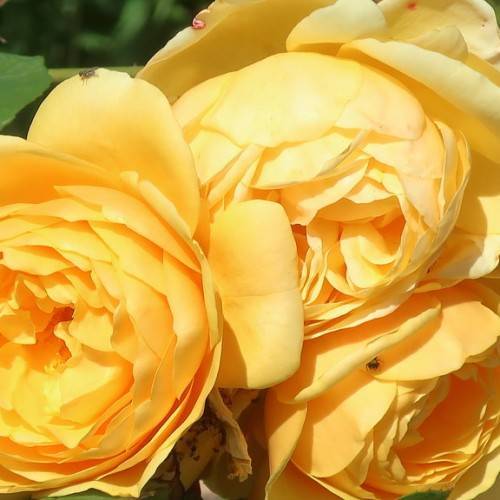
shrub rose
Rosa 'Ausmas' GRAHAM THOMAS
Cycle:
Perennial
Watering:
Average
Hardiness Zone:
5 - 9
Flowers:
Flowers
Sun:
Full sun
Leaf:
Yes
Growth Rate:
High
Maintenance:
Moderate
Drought Tolerant:
Yes
Care Level:
Medium
watering
Water shrub roses every 5-7 days, or when the soil feels dry to the touch. Aim to provide 2-3 inches of water per week, both from rain and extra watering, to keep the soil consistently moist. In climates with hot weather and low humidity, more frequent watering may be necessary, especially during the summer months when the roses are actively blooming. Wait until early morning or late evening to water to reduce the potential for disease. During winter dormancy, water less frequently, waiting until the soil has dried out before refilling the soil. Reduce watering frequency during winter months when the plant is not actively growing.
sunlight
A shrub rose (Rosa 'Ausmas' GRAHAM THOMAS) should be planted in an area that receives full sun, which is defined as 6 or more hours of direct sunlight each day. Morning sun is best for this species, as it will help to burn off any evening dew and prevent disease. Additionally, providing some afternoon shade can also be beneficial as it can help to keep the rosebush from wilting in extreme summer heat.
pruning
Shrub rose varieties such as Rosa 'Ausmas' GRAHAM THOMAS should be pruned in late winter or early spring for optimal growth and flowering. Pruning should be done annually to remove dead, broken, diseased, or crossing canes from the plants. The amount of pruning that should be done will depend on the individual plant and its size, age, and type of growth. However, as general guidelines, older plants can be pruned severely to rejuvenate and to remove dead, weak, or old canes. If the plant is relatively young, only light pruning is necessary to thin out weak or unwanted growth. Prune back canes by about 1-third of its length and aim to keep the shrub roughly round in shape while attending to any specific design elements you may have in mind. Additionally, remove any shoots that are growing in an awkward or congested manner, along with any shoots that are growing too tall or too wide.
